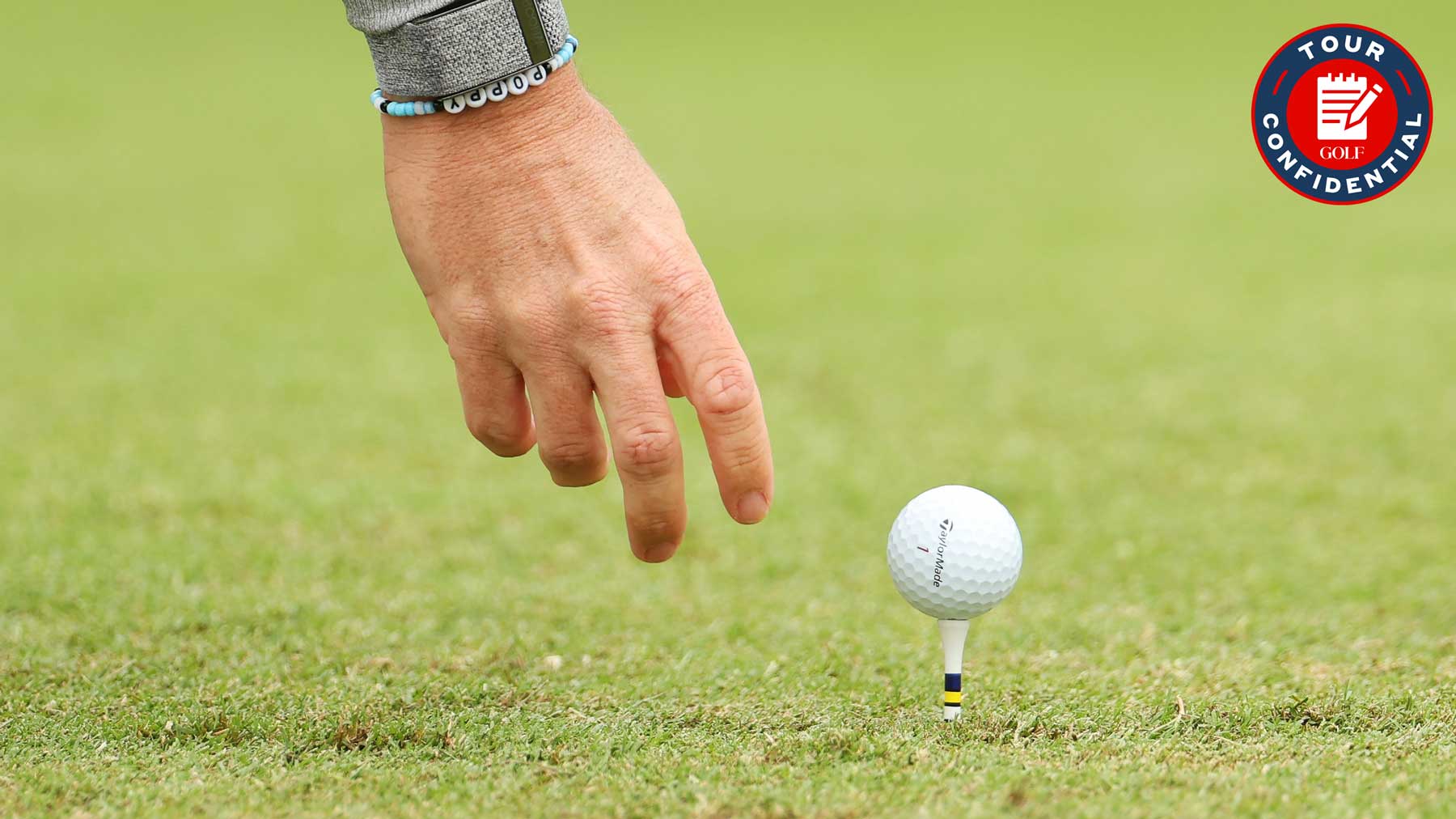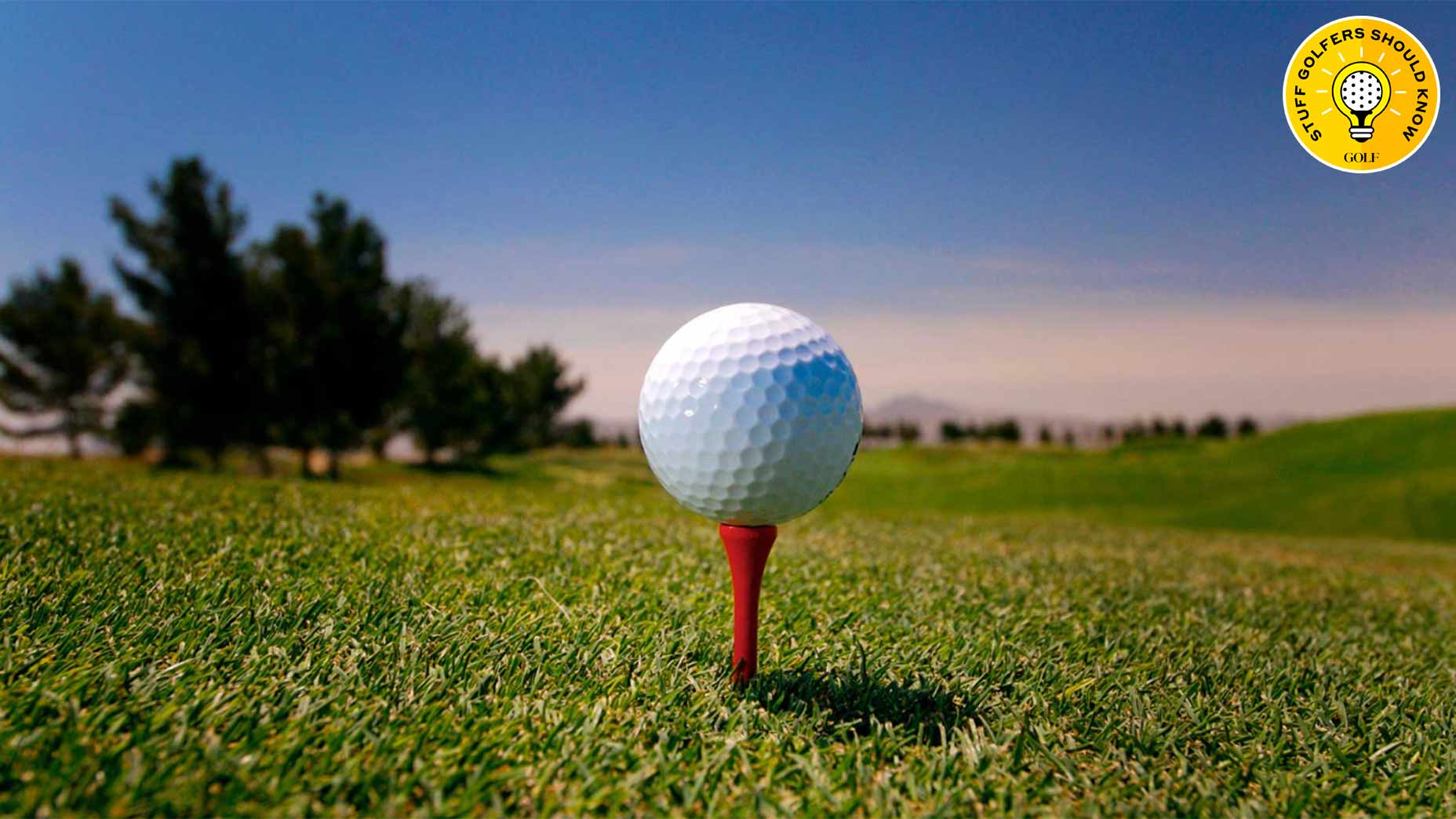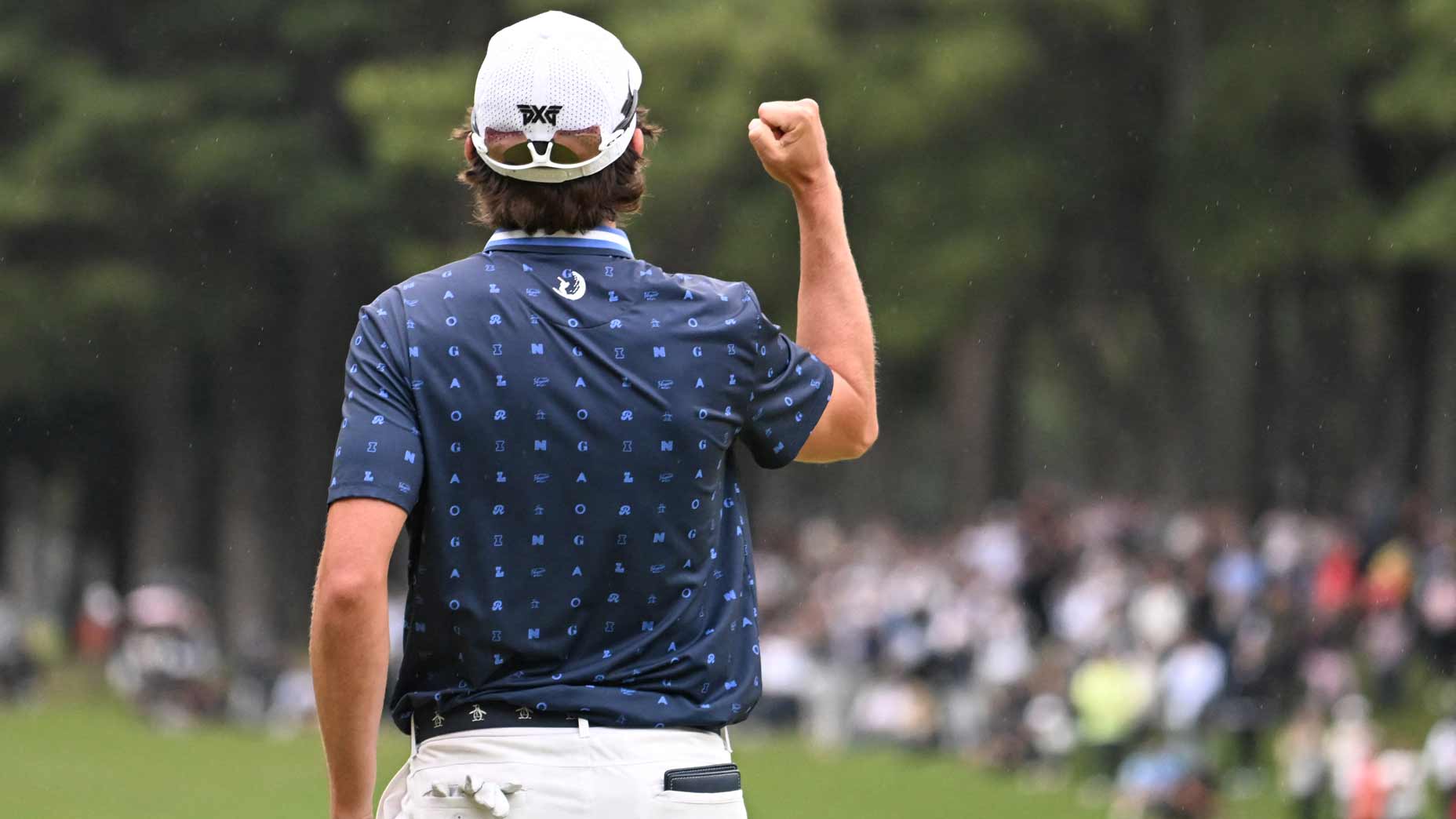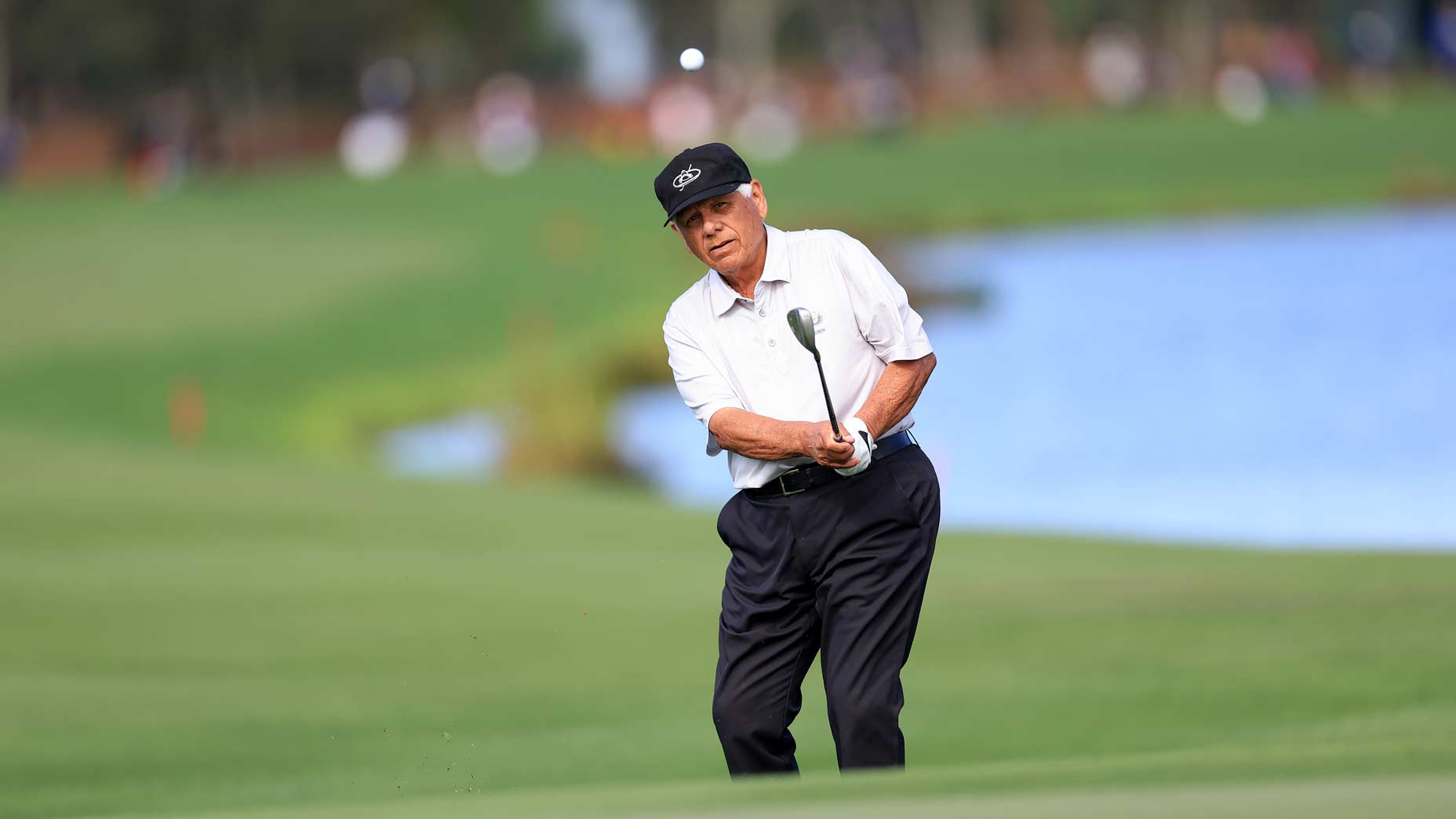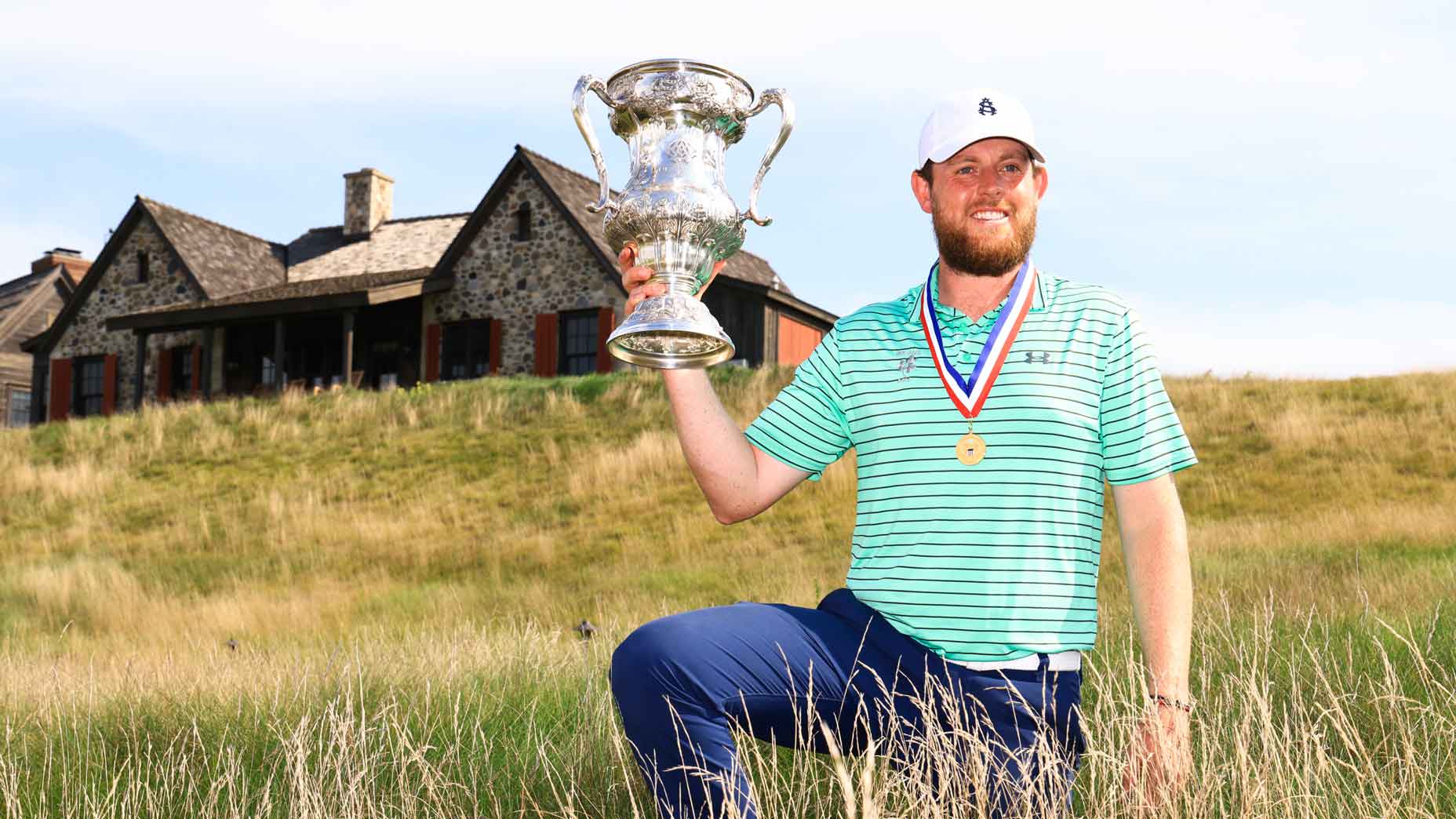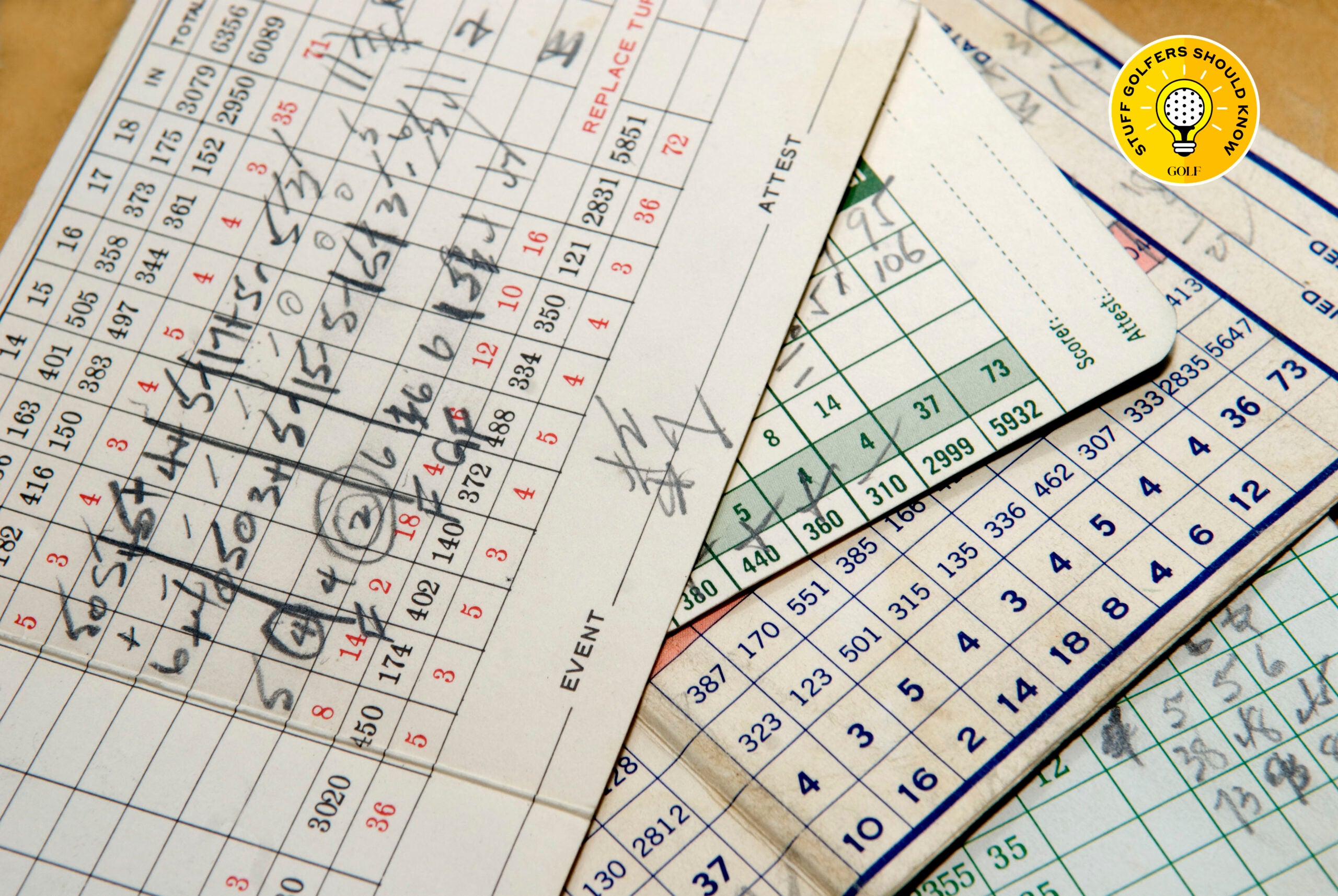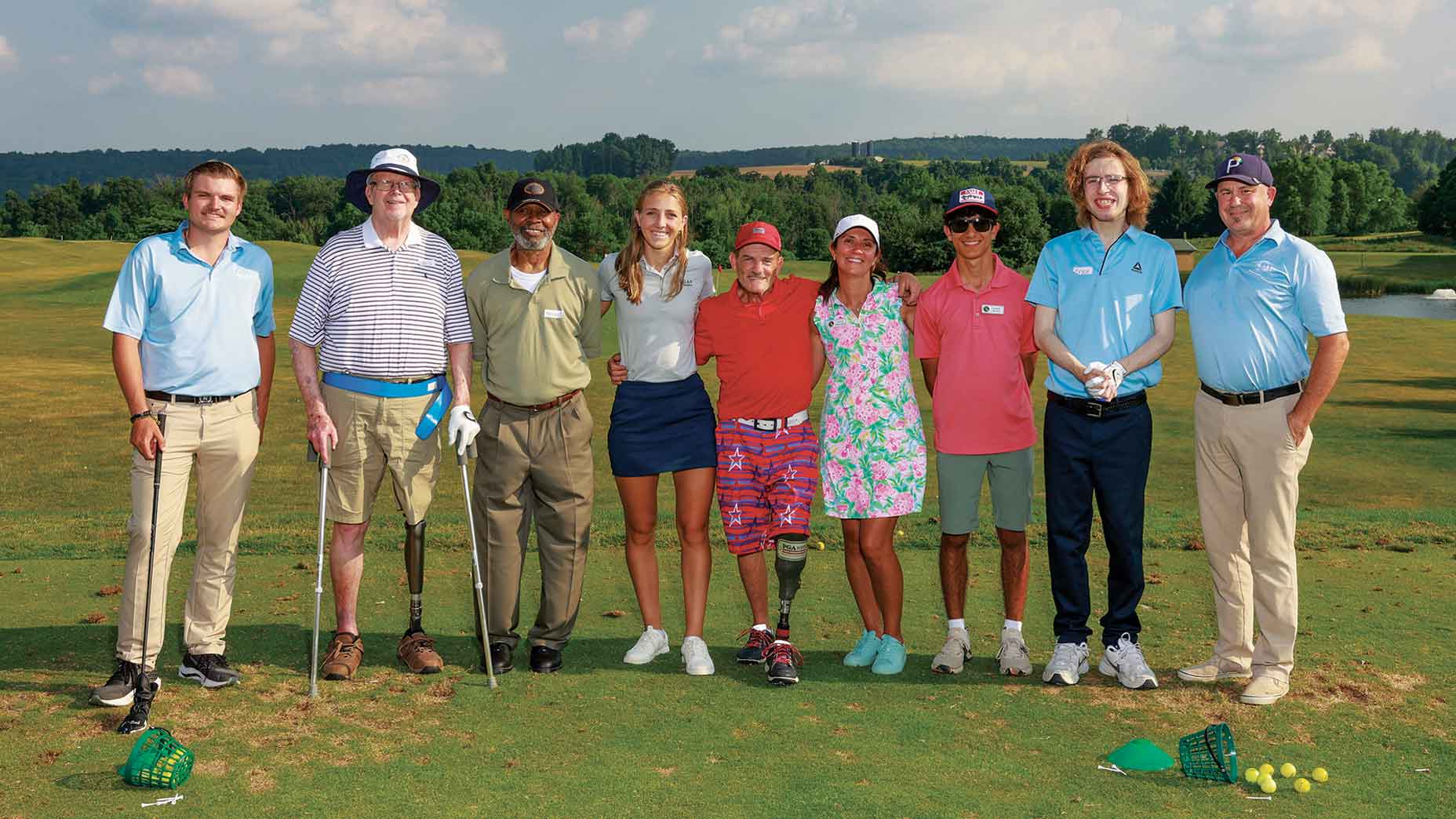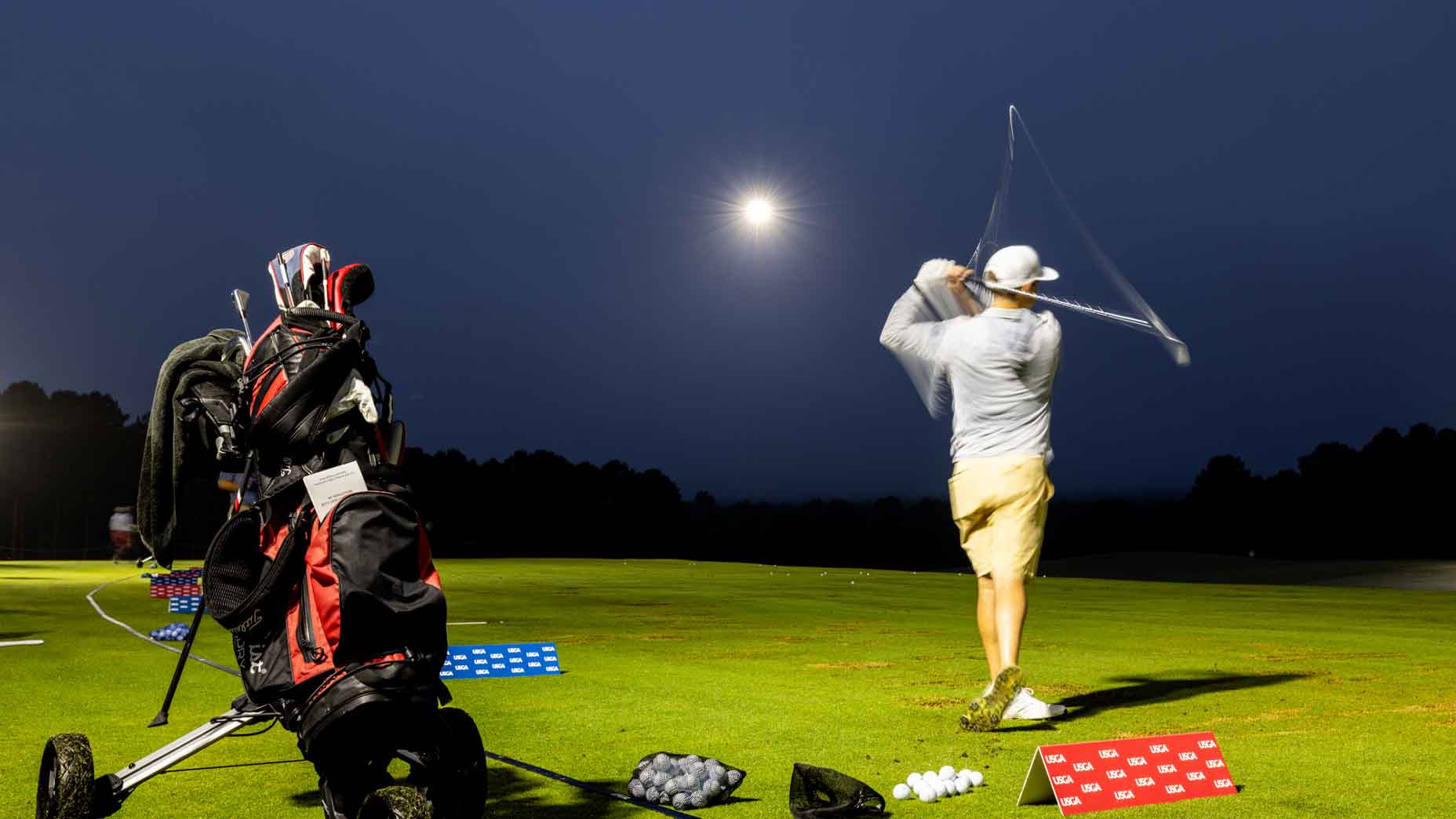How would a golf-ball rollback affect competitive amateurs? It’s complicated
- Share on Facebook
- Share on Twitter
- Share by Email

The GB&I Walker Cup team during a practice round at the 2021 Walker Cup.
Getty Images
If the USGA and R&A move forward with their proposal for a model local rule effectively rolling back the golf ball for elite players, it’s expected the game’s best players and biggest competitions (the PGA Tour, the majors, etc.) will follow suit.
The rule would make for new testing procedures that would make the ball play about 10-18 yards shorter for the world’s best players.
But what about the game’s next-best players? Or better yet, what about those with aspirations of playing at the highest level?
As a 0.9 USGA Handicap Index, I fall into the top 3 percent of all male golfers in the U.S., but I’m nowhere near the pro game. Division I college golf was an unlikely aspiration for me in high school. Still, I love competing, be that in club events or state and local golf association tournaments. I intend on playing in my first USGA qualifier later this year for the U.S. Mid-Amateur.
Tour Confidential: Is the golf-ball rollback a good idea, and will the PGA Tour fall in line?By: GOLF Editors
If I want to continue playing these kinds of events after the rule goes into effect (target date: 2026), will I have to play a rolled-back golf ball? If the answer is yes, does that mean I should play the rolled-back ball when I go play nine holes with my dad on a weekday afternoon or on a trip with friends to Scotland or Bandon Dunes?
All of these questions have yet to be answered.
‘Where do you draw the line?’
At a press conference Tuesday morning to discuss the USGA and R&A’s proposed model local rule, USGA CEO Mike Whan said the conversations between the rules bodies and groups like the NCAA haven’t happened yet.
“It would make sense to me given what we see at the college level to implement this,” Whan said. “Whether or not that’s something that they will or won’t do is conversations that we’ll have to have going forward from today.”
Then there’s the question of what constitutes an “elite” amateur tournament. Does that designation start and end with the U.S. and R&A Amateurs? Does a state open or state amateur count as elite? What about your local club championship, some of which are won by scores well under par? When pros and amateurs mingle in events like the famed Seminole Pro-Member, will the pros play one ball type and amateurs another?

“Once you get to a certain level, an elite level, the only golf you’re really playing is against other elite players in elite tournaments,” R&A chief Martin Slumbers said. “So I think that it will manage itself through carefully, but I think it’s quite — there is logic, and there will be a process, and we’ll be able through clarity to be able to do it.”
But what if the college game adopts the rule? Carter Thompson, a former collegiate player at Florida State and the University of Pennsylvania, said the modification could make for inequities.
“College-level players will adjust more quickly as they generally have more time to practice and play, and more consistent access to coaching,” Thompson said. “This puts mid-ams at a disadvantage in events like the U.S. Amateur.”
Then comes the issue of a college team or junior player who may have to prepare for multiple tournaments under different sets of rules.
“Inequity at the junior and amateur levels could become more pronounced,” Thompson said. “Players and colleges that have the means will be able to have two different sets of clubs: one set optimized for tournaments where the local rule is adopted, and one set optimized for tournaments where the local rule is not adopted. This adversely affects programs that are underfunded or don’t have a relationship with an equipment company, or junior golfers who already struggle to pay tournament entry fees.”
A dummy’s guide to the brand-new golf ball rulesBy: Dylan Dethier
This is why Thompson, who still competes in amateur events, sees uniformity among all governing bodies of the sport as a necessity.
Ryan Davis, who played at Penn State and now plays on PGA Tour Canada, agreed.
“It doesn’t make much sense to have two sets of rules for competitive players,” Davis said. “Where do you draw the line?”
The unfortunate reality in golf is there are so many different bodies of the sport. The USGA and R&A write the rules, while state and local associations administer them. Part of that process includes deciding which model local rules to apply.
One local association could easily adopt one set of rules — or just one rule — while another might not. A common example for most amateurs is how different golf associations allow scores to count for handicaps at different points in the year, or the use of the alternative to stroke and distance relief.
Based on Tuesday’s press conference, it’s still not clear which USGA and R&A events will adopt the local rule should the proposal move forward.
Whan said the rule would be used at “any of the USGA’s respective championships” without specifying which ones, adding, “It’s safe to say we wouldn’t be suggesting this if we didn’t think this would be something we would utilize.”
The women’s game
What was clear from the nearly 50-minute media session was that this is not a rule the governing bodies intend to impose on the women’s game.
“At this point, there isn’t a distance challenge in the women’s game,” Slumbers said. “You’re certainly seeing changes in the women’s game where more power, longer distances is coming in than maybe even five years ago. But at the moment there’s plenty of headroom on the golf courses that we have for the women’s game.”
This is something both Jackie Rogowicz, the reinging Pennsylvania Women’s Amateur Player of the Year and former Notre Dame assistant coach, and standout Notre Dame junior Isabella DiLisio agreed with. The rule isn’t meant for them.
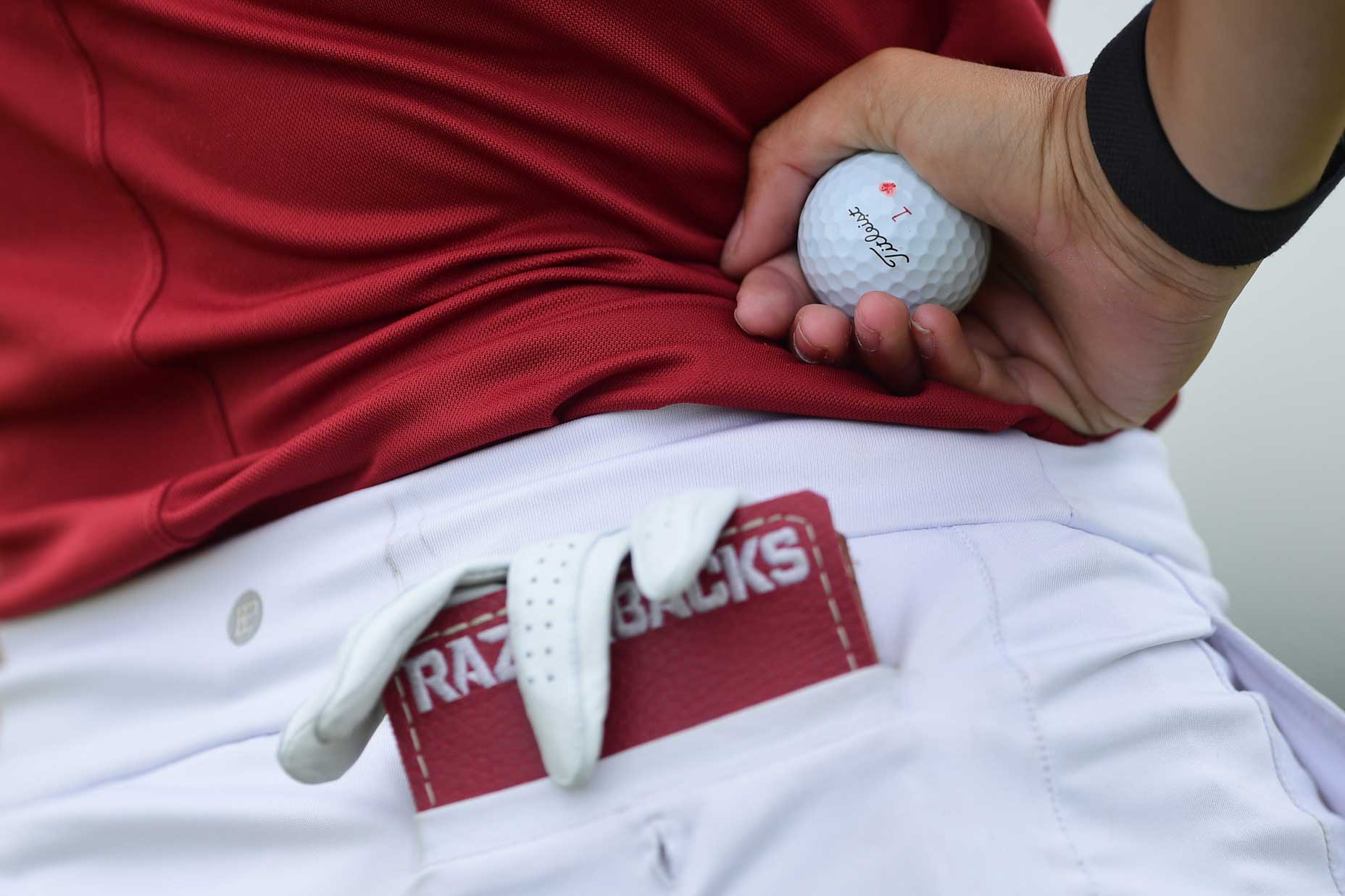
“Most women can’t overpower a course like the Rorys and Dechambeaus of the world,” DiLisio said. “[Even if it were implemented for women] the rules would apply to everyone in the tournament so it really won’t change much other than potentially higher scores.”
DiLisio compared the potential for men playing the new ball and women the old ball to men playing a longer set of tees and women a shorter set.
What does bifurcation mean for the competitive amateur?
This brings us back to the point that perhaps the players who would need to make the greatest adjustment with this proposed model local rule are not the game’s best players, but the players a tier or two below them.
My home club in Philadelphia has a stout stable of amateurs who vie for the club championship each year. Among them are players who have qualified for USGA events, won local amateurs and played collegiately. Yet, I struggle to foresee the club implementing the proposed local rule for its club championship. Not everyone who tees it up also plays in those outside events.
This could lead to confusion, given the USGA would like the NCAA to adopt its proposal. If that happens, you can imagine top amateur events would follow suit, seeing as college players regularly play in those tournaments.
The trickle down continues to the junior level. Will we see the potential for juniors to be recruited while playing the current ball, then start the adjustment to the new one in college? Talk about a new kind of “Freshman 15.”
There’s also the question of a player who doesn’t take up the game as a junior but then progresses quickly to the stage where he or she wants to play competitively. That could adjustment could theoretically deter a newer golfer from aspiring to play tournaments.
All the while, there’s not yet any evidence to support that a good player will still be a good player after switching to a different ball.
Slumbers brought up the comparison to other sports to defend the potential for bifurcation.
“We’re not the first sport to do this,” he said. “There are many other sports that have this sort of split model.”
But golf isn’t just any other sport. It’s not simply a pro game or a recreational game. There’s a grey area in between containing competitive players, who still can play for meaningful titles. This group represents only a small percentage of golfers, of course, but it’s there and it’s complex.
There’s a reason — many of them — the rollback has taken so long to roll out.
Latest In Gear

Jack Hirsh
Golf.com Editor
Jack Hirsh is the Associate Equipment Editor at GOLF. A Pennsylvania native, Jack is a 2020 graduate of Penn State University, earning degrees in broadcast journalism and political science. He was captain of his high school golf team and recently returned to the program to serve as head coach. Jack also still *tries* to remain competitive in local amateurs. Before joining GOLF, Jack spent two years working at a TV station in Bend, Oregon, primarily as a Multimedia Journalist/reporter, but also producing, anchoring and even presenting the weather. He can be reached at jack.hirsh@golf.com.

